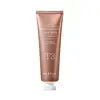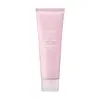What's inside
What's inside
 Key Ingredients
Key Ingredients

 Benefits
Benefits

 Concerns
Concerns

 Ingredients Side-by-side
Ingredients Side-by-side

Collagen Water
HumectantPropylene Glycol Dibenzoate
Skin ConditioningPolyvinyl Alcohol
Water
Skin ConditioningEthylhexyl Palmitate
EmollientGlycerin
Humectant1,2-Hexanediol
Skin ConditioningCaprylic/Capric Triglyceride
MaskingHydroxyethyl Urea
HumectantDipropylene Glycol
HumectantGlyceryl Stearate
EmollientSorbitan Sesquioleate
EmulsifyingParfum
MaskingHydroxyacetophenone
AntioxidantAcrylates/C10-30 Alkyl Acrylate Crosspolymer
Emulsion StabilisingArginine
MaskingPinus Pinaster Bark Extract
AntioxidantSodium Acetate
BufferingDisodium EDTA
Butylene Glycol
HumectantCaprylyl Glycol
EmollientAtelocollagen
Skin ConditioningCalcium Gluconate
HumectantHydrolyzed Elastin
EmollientGardenia Florida Fruit Extract
Skin ConditioningDextrin
AbsorbentGlutathione
Sodium Hyaluronate
HumectantHydrogenated Polyisobutene
EmollientCyanocobalamin
Skin ConditioningCynanchum Atratum Extract
Skin ConditioningThamnolia Vermicularis Leaf Extract
Skin ConditioningPrunus Amygdalus Dulcis Fruit Extract
Skin ConditioningTabebuia Impetiginosa Bark Extract
Skin ConditioningTremella Fuciformis Extract
HumectantAnemarrhena Asphodeloides Root Extract
Skin ConditioningAcetyl Hexapeptide-8
HumectantTocopherol
AntioxidantCollagen Water, Propylene Glycol Dibenzoate, Polyvinyl Alcohol, Water, Ethylhexyl Palmitate, Glycerin, 1,2-Hexanediol, Caprylic/Capric Triglyceride, Hydroxyethyl Urea, Dipropylene Glycol, Glyceryl Stearate, Sorbitan Sesquioleate, Parfum, Hydroxyacetophenone, Acrylates/C10-30 Alkyl Acrylate Crosspolymer, Arginine, Pinus Pinaster Bark Extract, Sodium Acetate, Disodium EDTA, Butylene Glycol, Caprylyl Glycol, Atelocollagen, Calcium Gluconate, Hydrolyzed Elastin, Gardenia Florida Fruit Extract, Dextrin, Glutathione, Sodium Hyaluronate, Hydrogenated Polyisobutene, Cyanocobalamin, Cynanchum Atratum Extract, Thamnolia Vermicularis Leaf Extract, Prunus Amygdalus Dulcis Fruit Extract, Tabebuia Impetiginosa Bark Extract, Tremella Fuciformis Extract, Anemarrhena Asphodeloides Root Extract, Acetyl Hexapeptide-8, Tocopherol
Water
Skin ConditioningGlycerin
HumectantDipropylene Glycol
HumectantHelianthus Annuus Seed Oil
EmollientPullulan
Sodium Polystyrene Sulfonate
Emulsion StabilisingAlgin
MaskingPolyglyceryl-2 Triisostearate
EmulsifyingPolysorbate 80
EmulsifyingPectin
Emulsion Stabilising1,2-Hexanediol
Skin ConditioningHydrogenated Polyisobutene
EmollientSucrose
HumectantTromethamine
BufferingAcrylates/C10-30 Alkyl Acrylate Crosspolymer
Emulsion StabilisingEthylhexylglycerin
Skin ConditioningCellulose Gum
Emulsion StabilisingHydroxyethylcellulose
Emulsion StabilisingRosa Damascena Flower Water
MaskingCaprylic/Capric Triglyceride
MaskingButylene Glycol
HumectantHydrolyzed Hyaluronic Acid
HumectantDisodium Phosphate
BufferingOlea Europaea Fruit Oil
MaskingPolysorbate 60
EmulsifyingHydrogenated Lecithin
EmulsifyingSqualane
EmollientButyrospermum Parkii Butter
Skin ConditioningCentella Asiatica Extract
CleansingSodium Phosphate
BufferingPolyglyceryl-10 Laurate
Skin ConditioningHydrolyzed Collagen
EmollientTocopherol
AntioxidantCholesterol
EmollientCeramide NP
Skin ConditioningAcetylphytosphingosine
Skin ConditioningTripeptide-1
Skin ConditioningPhytosphingosine
Skin ConditioningAcetyl Hexapeptide-8
HumectantAlanine/Histidine/Lysine Polypeptide Copper Hcl
Skin ConditioningCopper Tripeptide-1
Skin ConditioningPalmitoyl Tripeptide-1
Skin ConditioningPalmitoyl Pentapeptide-4
Skin ConditioningHexapeptide-11
Skin ConditioningHexapeptide-9
Skin ConditioningNonapeptide-1
Skin ConditioningSodium Dna
Skin ConditioningWater, Glycerin, Dipropylene Glycol, Helianthus Annuus Seed Oil, Pullulan, Sodium Polystyrene Sulfonate, Algin, Polyglyceryl-2 Triisostearate, Polysorbate 80, Pectin, 1,2-Hexanediol, Hydrogenated Polyisobutene, Sucrose, Tromethamine, Acrylates/C10-30 Alkyl Acrylate Crosspolymer, Ethylhexylglycerin, Cellulose Gum, Hydroxyethylcellulose, Rosa Damascena Flower Water, Caprylic/Capric Triglyceride, Butylene Glycol, Hydrolyzed Hyaluronic Acid, Disodium Phosphate, Olea Europaea Fruit Oil, Polysorbate 60, Hydrogenated Lecithin, Squalane, Butyrospermum Parkii Butter, Centella Asiatica Extract, Sodium Phosphate, Polyglyceryl-10 Laurate, Hydrolyzed Collagen, Tocopherol, Cholesterol, Ceramide NP, Acetylphytosphingosine, Tripeptide-1, Phytosphingosine, Acetyl Hexapeptide-8, Alanine/Histidine/Lysine Polypeptide Copper Hcl, Copper Tripeptide-1, Palmitoyl Tripeptide-1, Palmitoyl Pentapeptide-4, Hexapeptide-11, Hexapeptide-9, Nonapeptide-1, Sodium Dna
Ingredients Explained
These ingredients are found in both products.
Ingredients higher up in an ingredient list are typically present in a larger amount.
1,2-Hexanediol is a synthetic liquid and another multi-functional powerhouse.
It is a:
- Humectant, drawing moisture into the skin
- Emollient, helping to soften skin
- Solvent, dispersing and stabilizing formulas
- Preservative booster, enhancing the antimicrobial activity of other preservatives
Acetyl Hexapeptide-8, commonly known as Argireline or Acetyl Hexapeptide-3, is a popular peptide in skincare. It’s often referred to as a “Botox-like” ingredient because it helps reduce muscle movement.
By relaxing these micro-movements, Argireline may help minimize the appearance of fine lines and wrinkles. That said, it’s not as powerful as Botox, and research on its long-term effectiveness is still limited.
Beyond smoothing, Argireline may also support collagen production. Collagen is the protein that helps keep your skin firm, bouncy, and well-hydrated by strengthening the skin barrier.
So while Argireline isn’t a miracle fix, it can be a helpful addition to a routine focused on both prevention and skin health.
Read more about other common types of peptides here:
Learn more about Acetyl Hexapeptide-8Acrylates/C10-30 Alkyl Acrylate Crosspolymer is a synthetic polymer. It is used to thicken and improve the texture of products. Due to its properties, it can prevent water and oil ingredients from separating.
Butylene Glycol (or BG) is used within cosmetic products for a few different reasons:
Overall, Butylene Glycol is a safe and well-rounded ingredient that works well with other ingredients.
Though this ingredient works well with most skin types, some people with sensitive skin may experience a reaction such as allergic rashes, closed comedones, or itchiness.
Learn more about Butylene GlycolThis ingredient is an emollient, solvent, and texture enhancer. It is considered a skin-softener by helping the skin prevent moisture loss.
It helps thicken a product's formula and makes it easier to spread by dissolving clumping compounds.
Caprylic Triglyceride is made by combining glycerin with coconut oil, forming a clear liquid.
While there is an assumption Caprylic Triglyceride can clog pores due to it being derived from coconut oil, there is no research supporting this.
Learn more about Caprylic/Capric TriglycerideDipropylene Glycol is a synthetically created humectant, stabilizer, and solvent.
This ingredient helps:
Dipropylene glycol is technically an alcohol, but it belongs to the glycol family (often considered part of the ‘good’ alcohols). This means it is hydrating and gentle on skin unlike drying solvent alcohols like denatured alcohol.
As a masking agent, Dipropylene Glycol can be used to cover the smell of other ingredients. However, it does not have a scent.
Studies show Dipropylene Glycol is considered safe to use in skincare.
Learn more about Dipropylene GlycolGlycerin is already naturally found in your skin. It helps moisturize and protect your skin.
A study from 2016 found glycerin to be more effective as a humectant than AHAs and hyaluronic acid.
As a humectant, it helps the skin stay hydrated by pulling moisture to your skin. The low molecular weight of glycerin allows it to pull moisture into the deeper layers of your skin.
Hydrated skin improves your skin barrier; Your skin barrier helps protect against irritants and bacteria.
Glycerin has also been found to have antimicrobial and antiviral properties. Due to these properties, glycerin is often used in wound and burn treatments.
In cosmetics, glycerin is usually derived from plants such as soybean or palm. However, it can also be sourced from animals, such as tallow or animal fat.
This ingredient is organic, colorless, odorless, and non-toxic.
Glycerin is the name for this ingredient in American English. British English uses Glycerol/Glycerine.
Learn more about GlycerinHydrogenated Polyisobutene is a synthetic polymer. Polymers are compounds with high molecular weight. Hydrogenated Polyisobutene is an emollient and texture enhancer.
In one study, Hydrogenated Polyisobutene showed better skin hydration levels than Caprylic/Capric Triglyceride. As an emollient, it helps keep your skin soft and hydrated by trapping moisture in.
Hydrogenated Polyisobutene is often used as a mineral oil replacement.
Learn more about Hydrogenated PolyisobuteneTocopherol (also known as Vitamin E) is a common antioxidant used to help protect the skin from free-radicals and strengthen the skin barrier. It's also fat soluble - this means our skin is great at absorbing it.
Vitamin E also helps keep your natural skin lipids healthy. Your lipid skin barrier naturally consists of lipids, ceramides, and fatty acids. Vitamin E offers extra protection for your skin’s lipid barrier, keeping your skin healthy and nourished.
Another benefit is a bit of UV protection. Vitamin E helps reduce the damage caused by UVB rays. (It should not replace your sunscreen). Combining it with Vitamin C can decrease sunburned cells and hyperpigmentation after UV exposure.
You might have noticed Vitamin E + C often paired together. This is because it is great at stabilizing Vitamin C. Using the two together helps increase the effectiveness of both ingredients.
There are often claims that Vitamin E can reduce/prevent scarring, but these claims haven't been confirmed by scientific research.
Learn more about TocopherolWater. It's the most common cosmetic ingredient of all. You'll usually see it at the top of ingredient lists, meaning that it makes up the largest part of the product.
So why is it so popular? Water most often acts as a solvent - this means that it helps dissolve other ingredients into the formulation.
You'll also recognize water as that liquid we all need to stay alive. If you see this, drink a glass of water. Stay hydrated!
Learn more about Water